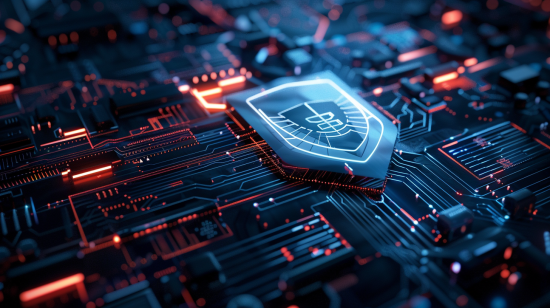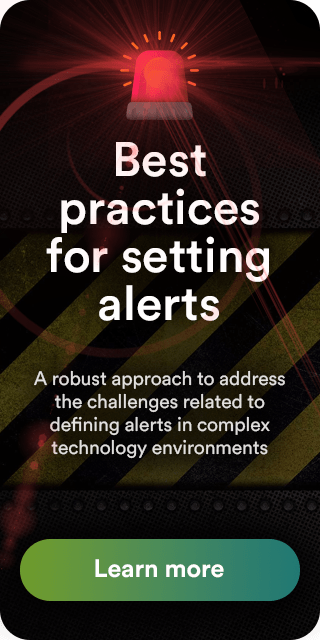Today, digital trust is required inside and outside the organization, so tools must be implemented, with cybersecurity methods and best practices in each layer of your systems and their infrastructure: applications, operating systems, users, both on-premise and in the cloud. This is what we call System Hardening an essential practice that lays the foundation for a safe IT infrastructure. Its goal is to reduce the attack surface as much as possible, strengthening the systems to be able to face possible security attacks and get rid of as many entry points for cybercrime as possible.
Comprehensive Approach to Organizational Security
To implement organizational security, a comprehensive approach is undoubtedly required, since devices (endpoints, sensors, IoT), hardware, software, local environments, cloud (and hybrid) environments must be considered, along with security policies and local and even international regulatory compliance. It should be remembered that today and in the future we must not only protect an organization’s digital assets, but also avoid downtime and possible regulatory sanctions (associated with non-compliance with GDPR and data protection laws). Hardening also helps lay the solid foundation on which to implement advanced security solutions. Later, in Types of Hardening we will see where it is possible to implement security strengthening.
Benefits of Hardening in Cybersecurity
- Improved system functionality: Hardening measures help optimize system resources, eliminate unnecessary services and software, and apply security patches and updates. The consequences of actions lead to better system performance, as fewer resources are also wasted on unused or vulnerable components.
- Increased security level: A strengthened system reduces the surface area of a potential attack and strengthens defenses against threats (e.g., malware, unauthorized access, and data breaches). Confidential information is protected and user privacy is guaranteed.
- Compliance simplification and auditing: Organizations must comply with industry-specific security standards and regulations to protect sensitive data. Hardening helps meet these requirements and ensures compliance with industry-specific standards, such as GDPR (personal data protection), the payment card industry’s data security standard (PCI DSS) or the Health Insurance Portability and Accountability Acts (HIPAA, to protect a health insurance user’s data).
Other benefits include ensuring business continuity (without disruption or frictions), multi-layered defense (access controls, encryption, firewalls, intrusion detection systems, and regular security audits), and the ability to take a more proactive stance on security, with regular assessments and updates to prepare for emerging threats and vulnerabilities.
Every safe system must have been previously secured, and this is precisely what hardening consists of.
Types of Hardening
In the IT infrastructure set, there are several subsets that require different security approaches:
1. Configuration Management Hardening
Implementing and configuring security for multiple system components (including hardware, operating systems, and software applications). It also involves disabling unnecessary services and protocols, configuring access controls, implementing encryption, and safe communication protocols. It’s worth mentioning that security and IT teams often keep conflicting agendas. The hardening policy should take into account discussions between the two parties. It is also recommended to implement:
- Configurable item assessment: From user accounts and logins, server components and subsystems, what software and application updates and vulnerabilities to perform, networks and firewalls, remote access and log management, etc.
- Finding the balance between security and features: Hardening’s policy should consider both the requirements of the security team and the ability of the IT team to implement it using currently assigned levels of time and manpower. It must also be decided which challenges must be faced and which are not worthwhile for operational times and costs.
- Change management and “configuration drift” prevention: In Hardening, continuous monitoring must be implemented, where automation tools contribute to compliance with requirements at any time, getting rid of the need for constant scanning. Also, in unwanted changes, hardening policies that can happen in the production environment can be reinforced. Finally, in case of unauthorized changes, automation tools help detect anomalies and attacks to implement preventive actions.
2. Application Hardening
Protection of software applications running on the system, by removing or disabling unnecessary features, application-specific patching and security updates, along with safe coding practices and access controls, in addition to application-level authentication mechanisms. The importance of application security lies in the fact that users in the organization ask for safe and stable environments; on the part of the staff, patch and update application allows them to react to threats and implement preventive measures. Remember that users are often the entry point into the organization for cybercrime. Among the most common techniques, we can highlight:
- Install applications only from trusted repositories.
- Patch automations of standard and third-party applications.
- Installation of firewalls, antivirus and malware or spyware protection programs.
- Software-based data encryption.
- Password management and encryption applications.
3. Operating System (OS) Hardening
Configuring the operating system to minimize vulnerabilities, either by disabling unnecessary services, shutting down unused ports, implementing firewalls and intrusion detection systems, enforcing strong password policies, and regularly applying security patches and updates. Among the most recommended methods, there are the following:
- Applying the latest updates released by the operating system developer.
- Enable built-in security features (Microsoft Defender or third-party Endpoint Protection platform software or EPP, Endpoint Detection Rate or EDR from third parties). This will perform a malware search on the system (Trojan horses, sniffer, password sniffers, remote control systems, etc.).
- Remove unnecessary drivers and update used ones.
- Delete software installed on the machine that is unnecessary.
- Enable secure boot.
- Restrict system access privileges.
- Use biometrics or authentication FIDO (Fast Identity Online) in addition to passwords.
Also, a strong password policy can be implemented, protect sensitive data with AES encryption or self-encrypting drives, firmware resiliency technologies, and/or multi-factor authentication.
4. Server Hardening
Removing vulnerabilities (also known as attack vectors) that a hacker could use to access the server. It focuses on securing data, ports, components and server functions, implementing security protocols at hardware, firmware and software level. The following is recommended:
- Patch and update your operating systems periodically.
- Update third-party software needed to run your servers according to industry security standards.
- Require users to create and maintain complex passwords consisting of letters, numbers, and special characters, and update these passwords frequently.
- Lock an account after a certain number of failed login attempts.
- Disable certain USB ports when a server is booted.
- Leverage multi-factor authentication (MFA)
- Using encryption AES or self-encrypted drives to hide and protect business-critical information.
- Use virus and firewall protection and other advanced security solutions.
5. Network Hardening
Protecting network infrastructure and communication channels. It involves configuring firewalls, implementing intrusion prevention systems (IPS) and intrusion detection systems (IDS), encryption protocols such as SSL/TLS, and segmenting the network to reduce the impact of a breach and implement strong network access controls. It is recommended to combine IPS and IDS systems, in addition to:
- Proper configuration of network firewalls.
- Audits of network rules and access privileges.
- Disable unnecessary network ports and network protocols.
- Disable unused network services and devices.
- Network traffic encryption.
It is worth mentioning that the implementation of robust monitoring and recording mechanisms is essential to strengthen our system. It involves setting up a security event log, monitoring system logs for suspicious activity, implementing intrusion detection systems, and conducting periodic security audits and reviews to identify and respond to potential threats in a timely manner.
Practical 9-Step Hardening Application
Although each organization has its particularities in business systems, there are general hardening tasks applicable to most systems. Below is a list of the most important tasks as a basic checklist:
1. Manage access: Ensure that the system is physically safe and that staff are informed about security procedures. Set up custom roles and strong passwords. Remove unnecessary users from the operating system and prevent the use of root or “superadmin” accounts with excessive privileges. Also, limit the membership of administrator groups: only grant elevated privileges when necessary.
2. Monitor network traffic: Install hardened systems behind a firewall or, if possible, isolated from public networks. A VPN or reverse proxy must be required to connect. Also, encrypt communications and establish firewall rules to restrict access to known IP ranges.
3. Patch vulnerabilities: Keep operating systems, browsers, and any other applications up to date and apply all security patches. It is recommended to keep track of vendor safety advisories and the latest CVEs.
4. Remove Unnecessary Software: Uninstall any unnecessary software and remove redundant operating system components. Unnecessary services and any unnecessary application components or functions that may expand the threat surface must be disabled.
5. Implement continuous monitoring: Periodically review logs for anomalous activity, with a focus on authentications, user access, and privilege escalation. Reflect records in a separate location to protect the integrity of records and prevent tampering. Conduct regular vulnerability and malware scans and, if possible, conduct an external audit or penetration test.
6. Implement secure communications: Secure data transfer using safe encryption. Close all but essential network ports and disable unsafe protocols such as SMBv1, Telnet, and HTTP.
7. Performs periodic backups: Hardened systems are, by definition, sensitive resources and should be backed up periodically using the 3-2-1 rule (three copies of the backup, on two types of media, with one copy stored off-site).
8. Strengthen remote sessions: If you must allow Secure Shell or SSH (remote administration protocol), make sure a safe password or certificate is used. The default port must be avoided, in addition to disabling elevated privileges for SSH access. Monitor SSH records to identify anomalous uses or privilege escalation.
9. Monitor important metrics for security:Monitor logs, accesses, number of connections, service load (CPU, Memory), disk growth. All these metrics and many more are important to find out if you are being subjected to an attack. Having them monitored and known in real time can free you from many attacks or service degradations.
Hardening on Pandora FMS
Pandora FMS incorporates a series of specific features to monitor server hardening, both Linux and Windows. For that, it runs a special plugin that will perform a series of checks, scoring whether or not it passes the registration. These checks are scheduled to run from time to time. The graphical interface structures what is found in different categories, and the evolution of system security over time can be visually analyzed, as a temporal graph. In addition, detailed technical reports can be generated for each machine, by groups or made comparative.
It is important to approach the security tasks of the systems in a methodical and organized way, attending first to the most critical and being methodical, in order to be able to do it in all systems equally. One of the fundamental pillars of computer security is the fact of not leaving cracks, if there is an entrance door, however small it may be, and as much as we secured the rest of the machines, it may be enough to have an intrusion in our systems.
The Center for Internet Security (CIS) leads the development of international hardening standards and publishes security guidelines to improve cybersecurity controls. Pandora FMS uses the recommendations of the CIS to implement a security audit system, integrated with monitoring to observe the evolution of Hardening throughout your organization, system by system.
Use of CIS Categories for Safety Checks
There are more than 1500 individual checks to ensure the security of systems managed by Pandora FMS. Next, we mention the CIS categories audited by Pandora FMS and some recommendations:
- Hardware and software asset inventory and control
It refers to all devices and software in your organization. Keeping an up-to-date inventory of your technology assets and using authentication to block unauthorized processes is recommended. - Device inventory and control
It refers to identifying and managing your hardware devices so that only those who are authorized have access to systems. To do this, you have to maintain adequate inventory, minimize internal risks, organize your environment and provide clarity to your network. - Vulnerability Management
Continuously scanning assets for potential vulnerabilities and remediating them before they become the gateway to an attack. Patch updating and security measures in the software and operating systems must be ensured. - Controlled use of administrative privileges
It consists of monitoring access controls and user performance with privileged accounts to prevent any unauthorized access to critical systems. It must be ensured that only authorized people have elevated privileges to avoid any misuse of administrative privileges. - Safe hardware and software configuration
Security configuration and maintenance based on standards approved by your organization. A rigorous configuration management system should be created, to detect and alert about any misconfigurations, along with a change control process to prevent attackers from taking advantage of vulnerable services and configurations. - Maintenance, supervision and analysis of audit logs and records
Collection, administration and analysis of event audit logs to identify possible anomalies. Detailed logs are required to fully understand attacks and to be able to effectively respond to security incidents. - Defenses against malware
Supervision and control of installation and execution of malicious code at multiple points in the organization to prevent attacks. Anti-malware software should be configured and used and take advantage of automation to ensure quick defense updates and swift corrective action in the event of attacks. - Email and Web Browser Protection
Protecting and managing your web browsers and email systems against online threats to reduce the attack surface. Deactivate unauthorized email add-ons and ensure that users only access trusted websites using network-based URL filters. Remember to keep these most common gateways safe from attacks. - Data recovery capabilities
Processes and tools to ensure your organization’s critical information is adequately supported. Make sure you have a reliable data recovery system in place to restore information in the event of attacks that compromise critical data. - Boundary defense and data protection
Identification and classification of sensitive data, along with a number of processes including encryption, data leak protection plans, and data loss prevention techniques. It establishes strong barriers to prevent unauthorized access. - Account Monitoring and Control
Monitor the entire lifecycle of your systems and application accounts, from creation through use and inactivity to deletion. This active management prevents attackers from taking advantage of legitimate but inactive user accounts for malicious purposes and allows them to maintain constant control over the accounts and their activities.
It is worth mentioning that not all categories are applicable in a system, but there are controls to verify whether or not they apply. Let’s look at some screens as an example of display.
Detail example in a hardening control of a Linux (Debian) server

This control explains that it is advisable to disable the ICMP packet forwarding, as contemplated in the recommendations of CIS, PCI_DSS, NIST and TSC.
Example listing of checks by group (in this case, network security)

Example of controls, by category on a server:

The separation of the controls by category is key to be able to organize the work and to delimit the scope, for example, there will be systems not exposed to the network where you may “ignore” the network category, or systems without users, where you may avoid user control.
Example of the evolution of the hardening of a system over time:

This allows you to see the evolution of securitization in a system (or in a group of systems). Securitization is not an easy process, since there are dozens of changes, so it is important to address it in a gradual way, that is, planning their correction in stages, this should produce a trend over time, like the one you may see in the attached image. Pandora FMS is a useful tool not only for auditing, but also for monitoring the system securitization process.

Other additional safety measures related to hardening
- Permanent vulnerability monitoring. Pandora FMS also integrates a continuous vulnerability detection system, based on mitre databases (CVE, Common Vulnerabilities and Exposure) and NIST to continuously audit vulnerable software across your organization. Both the agents and the remote Discovery component are used to determine on which of your systems there is software with vulnerabilities. More information here.
- Flexibility in inventory: Whether you use Linux systems from different distributions or any Windows version, the important thing is to know and map our infrastructure well: installed software, users, paths, addresses, IP, hardware, disks, etc. Security cannot be guaranteed if you do not have a detailed inventory.
- Constant monitoring of security infrastructure: It is important to monitor the status of specific security infrastructures, such as backups, antivirus, VPN, firewalls, IDs/IPS, SIEM, honeypots, authentication systems, storage systems, log collection, etc.
- Permanent monitoring of server security: Verifying in real time the security of remote access, passwords, open ports and changes to key system files.
- Proactive alerts: Not only do we help you spot potential security breaches, but we also provide proactive alerts and recommendations to address any issues before they become a real threat.
I invite you to watch this video about Hardening on Pandora FMS
Positive impact on safety and operability
As we have seen, hardening is part of the efforts to ensure business continuity. A proactive stance on server protection must be taken, prioritizing risks identified in the technological environment and applying changes gradually and logically. Patches and updates must be applied constantly as a priority, relying on automated monitoring and management tools that ensure the fast correction of possible vulnerabilities. It is also recommended to follow the best practices specific to each hardening area in order to guarantee the security of the whole technological infrastructure with a comprehensive approach.
Additional Resources
Links to Pandora FMS documentation or read the references to CIS security guidelines: See interview with Alexander Twaradze, Pandora FMS representative to countries implementing CIS standards.
Pandora FMS’s editorial team is made up of a group of writers and IT professionals with one thing in common: their passion for computer system monitoring. Pandora FMS’s editorial team is made up of a group of writers and IT professionals with one thing in common: their passion for computer system monitoring.
















